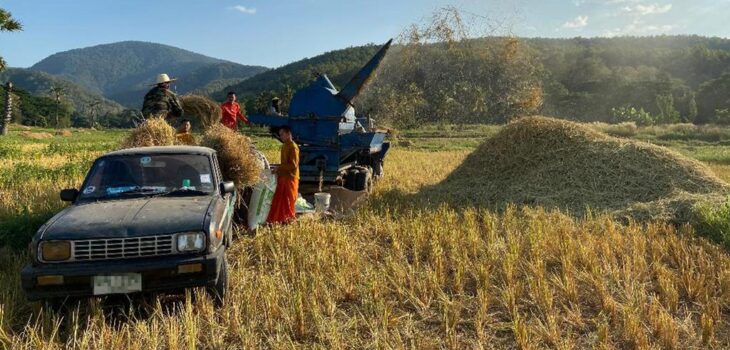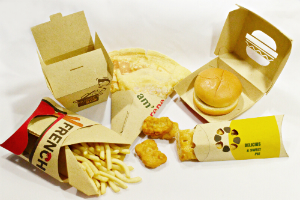
How rice straw paper protects the climate
The Seed Awards are presented to selected climate-friendly start-ups. In addition to the prize money, the winners receive technical support such as assistance in developing business plans. The publicity and high profile presentation of these awards is intended to encourage companies to emulate them. We will present a selection of winners in the course of the year, in a series of articles. We start the series with the company Fang Thai from Thailand.
The idea: paper made from rice straw
Fang Thai Factory Limited Partnership, located in Lampang Province in Thailand has developed the technology to produce paper from the rice straw, a residue of the rice crop.
The company produces high-quality biodegradable paper and packaging without addition of hazardous chemicals during the process. In addition, it will sell its wet pulp to companies that want to produce paper in a sustainable way. According to the Ministry of Natural Resources and Environment of Thailand calculated carbon footprint, Fang Thai is able to reduce approximately 28,000 tons of CO2 emissions per year addressing in this way one of the most important issues of the industry.
For the local community where Fang Thai is located, in has generated new sources of income for the farmers and also reduced the burning of crop residues and consequently air pollution.
“A real alternative – and 100% biodegradable”
How did you get the idea to start your company?
Jaruwan Khammuang: I come from Bann Samkha in Lampang province, Thailand; a small village with a community composed primarily of rice farmers. Despite the economic gains as rice farmers, we face two key challenges. One is the lack of income for many families after the harvest season, resulting in domestic migration of many to bigger cities in search of new opportunities. Second is air pollution and rise of CO2 emissions from the open burning of the rice straw.
In a quest to address these issues, Nathapol Khammuang (Manager of Fang Thai Factory Limited Partnership) and I, founded the use of rice straw as a raw material for paper production. Having in mind the huge environmental crisis caused by the packaging industry in terms of deforestation, CO2 emissions and waste management, we decided to make 100% biodegradable paper from rice straw as a solution.
The development of this product took about two years of extensive research and experiments, looking and collaborating with alliances and experts, and learning from key advisers and exhibitions.
Why is this topic important to you personally?
I was raised up in a family and community of rice farmers. The issues mentioned above, are long standing challenges that have been increasing and continue to affect my community. I always desired to come back to my hometown and help in its development.
What were and are the biggest challenges that you encountered?
The first challenge is to scale up business to reach customer demand at a competitive price. Second, is to replace plastic products around the world at the lowest or equal price, affordable to all. And third, is to educate and create awareness amongst the farmers to stop open burning rather having them do it as a law.
What have you already achieved?

Once established, we started with selling small amounts of handicraft products and packaging. Later, we got a breakthrough when a big company that needed a large amount of the product approached us. Unfortunately, due to our production capacity, we were not able to meet their demand. However, this resulted in interest from many other clients.
With our idea we contribute to the economic development for the community here in Bann Samkha village, where about 160 families are dependent on the income from rice and fruit farming. Our solutions offer an ideal and environmentally friendly option for secondary packaging for products such as perishable & non-perishable food, cosmetics, and beverages due to rice paper customizable design, high-quality features and competitive price. Our work further contributes to the Sustainable Development Goals (SDGs) especially SDG 1: No poverty and SDG 13: Climate action. However, in many ways we also respond to SDGs on good health and well-being, gender equality, decent work and economic growth and responsible consumption and production.
What are your plans for the future?
Our plan is to increase capacity at 1,000 tons per month within 2020. The more we increase our capacity, the more we are able to help our community and the world. We also still need to find alternatives to the popular practice of burning crop residues, because it is causing high air pollution levels in the town.
What does the SEED Award mean for you and your project?
Through the award, I can expand the market and I have the opportunities to network with other people. This programme enabled my company’s rapid growth through their support and encouragement.
The content and image all from IKI
1 COMMENT
Hello my friend! I wish to say that this article is awesome, nice written and include approximately all significant infos. I抎 like to see more posts like this.
Comments are closed.